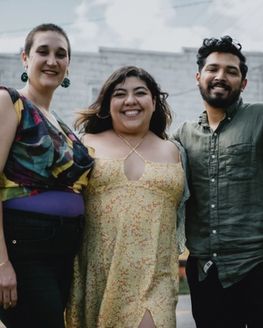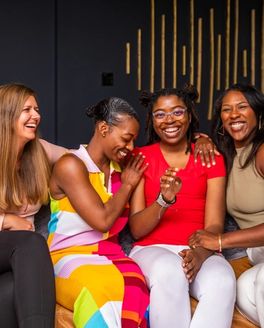
Raíces: Resistance Through Culture
Donate to Raíces
Leer en español
Raíces Emma-Erwin began with a dream of the mothers in Asheville’s Emma community, which has a large Latino population. They felt the truth of it in their bones–they were in danger of weakening family bonds and loss of cultural identity as their children lost their Spanish language. Hailing from Mexico and other countries in Central America, for the past 20-25 years western North Carolina has increasingly become home for folks seeking work and educational opportunities, safety, and the hope of creating a better future for their kids. When those children go to public school in Buncombe County, learning English–the dominant language of their predominantly white peers and teachers–is an inevitability. But at what cost? If a mother tongue is lost, you’ll also lose the keys to your cultural identity and sense of belonging.
Formerly known as Nuestro Centro, the organization first opened in 2007 to serve the needs of the growing Latino community in Asheville. Ana Mayra Hernadez Aguilar, who serves as Co-Director of Raíces, recounted that Nuestro Centro evolved as the challenges facing the community shifted throughout the early and mid 2000s.
“In 2013, Raíces was created when the mothers wanted to have a presence in the schools and be able to participate in the school system,” Aguilar said. “Before, they would require a passport or license for parents to be able to participate in school activities. So, we decided to participate in policy change so that we could figure out a way to be in the schools, and start an arts, culture, and dance group at Emma Elementary School.”
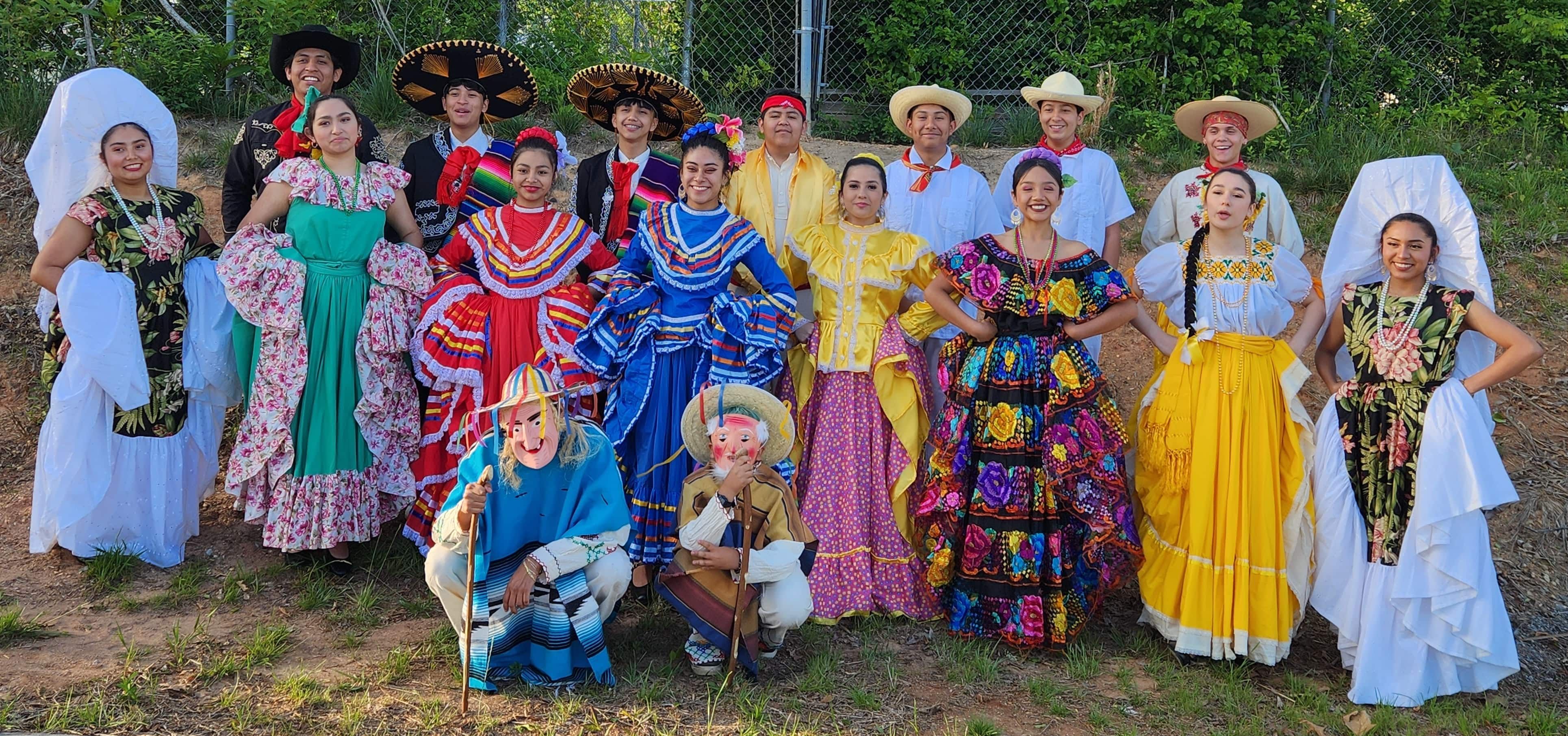
Today, Raíces, meaning “roots or rooted,” has expanded to provide programming to children and youth that includes fun, culturally relevant and arts-based after school activities and a summer camp. The Mexican folklóric dance group, Ballet Folklórico Raíces–ages 14-20– meets in the evening for rehearsal of dances which each have their own history and costume.
Any parent knows the anguish of watching a child feel loneliness and isolation, and that sense of helplessness is magnified if there’s also a language barrier to contend with. In Raíces, all the programming is taught and facilitated in Spanish, and over the years, the mothers have watched the way the children have responded and blossomed. Kids who had grown quiet gradually began talking with their parents again and connecting with their families. They regained a sense of confidence as they felt the joy of taking up space, moving their bodies to dance, while wearing beautiful traditional dresses and costumes. The children who began with Raíces in 2013, are now the young adults who come back to teach a new generation of younger children, and the cycle of cultural pride and generational healing continues.
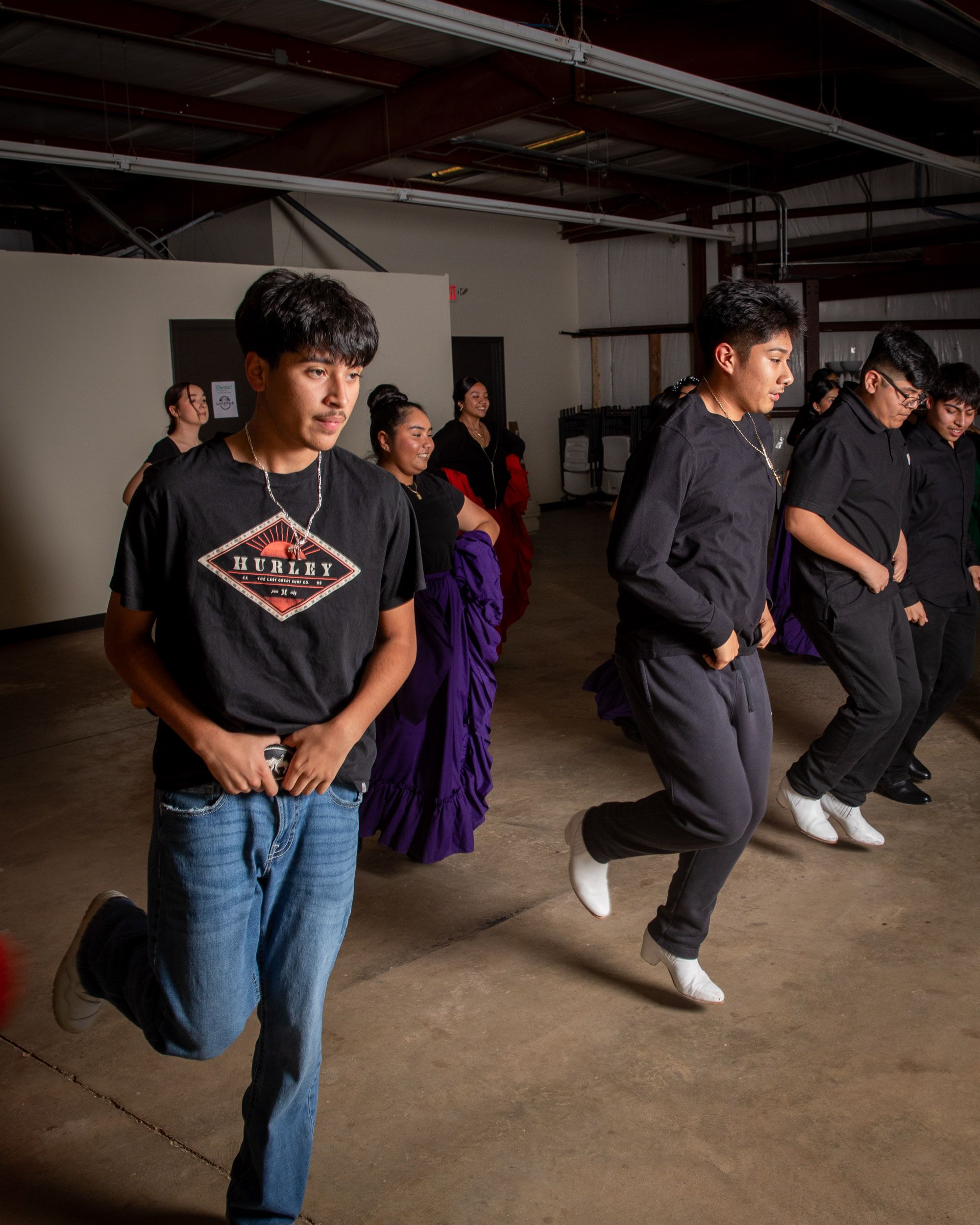
“Raíces was born out of resistance to oppression, including police and law enforcement oppression that was happening in our neighborhood around 2012-13 when there were a lot of police license checkpoints in our neighborhood…police officers were stopping parents at the entrance of their neighborhoods and mobile home parks while the children watched from the school buses. We wanted to raise awareness,” Geny Hernandez, the Director of Organizational Development and Popular Education for Colaborativa La Milpa (a 501-c3 collective of grassroots organizations, including Raíces) said.
According to the Center for American Progress, North Carolina’s immigrant population played a net positive role in the state’s economy. Financials aside, the cultural impact alone could also be viewed through a lens of gratitude and appreciation–if you’ve ever sampled the enticing fare at El Que Pasa on Patton Ave., or encountered the concept of “popular education” and building collective knowledge, you know the cultural impacts of Latin America are invaluable assets to American life. Though the Statue of Liberty at Liberty Island stands as a symbolic welcome to immigrants, the U.S. drastically wavers on its commitment to this welcome. Checkpoints and other threatening Immigration and Customs Enforcement (ICE) activities would become commonplace in North Carolina after the Homeland Security Act was passed by Congress in 2002.
In resisting erasure and anti-immigrant sentiments, Raíces chooses joy and cultural celebration as a strategic, foundational principle for enacting change. Ballet Folklórico Raíces performs an average of 8 times a year, and gathering together serves as an opportunity for community members to build relationships, create cohesiveness, and experience pride in their cultural identities. Raíces is also a member of Colaborativa La Milpa, a collective of Latino and immigrant-led organizations working to change racial, economic, and educational disparities in the community.

Raíces programming is primarily run by a few committed Latina and immigrant staff members and bolstered by the energy of parent volunteers, many of whom already work at least one, and, often, two jobs. Engaging about 75 children and 50 families, Raíces works throughout the Emma community, with children and youth traveling from across the Buncombe County school district to join after school groups and the summer camp, offered for free to mitigate the financial burden of quality childcare.
Offering stipends to parent volunteers and youth facilitators, hiring skilled dance instructors, providing snacks and food, keeping arts and crafts materials stocked all requires funding that Raíces works hard to raise each year as the demand for their programs continues to grow. Grants are helpful but can only go so far when the need is so great. No one wants to turn away the children and families who ask to join Raíces programs, but sometimes they have to in order to ensure a high standard of care. With access to more funding and resources, Raíces could offer space for 15 or more children to continue learning vital language skills and cultural traditions, feel a sense of community pride, and be enveloped in a strong sense of who they are and where they come from.
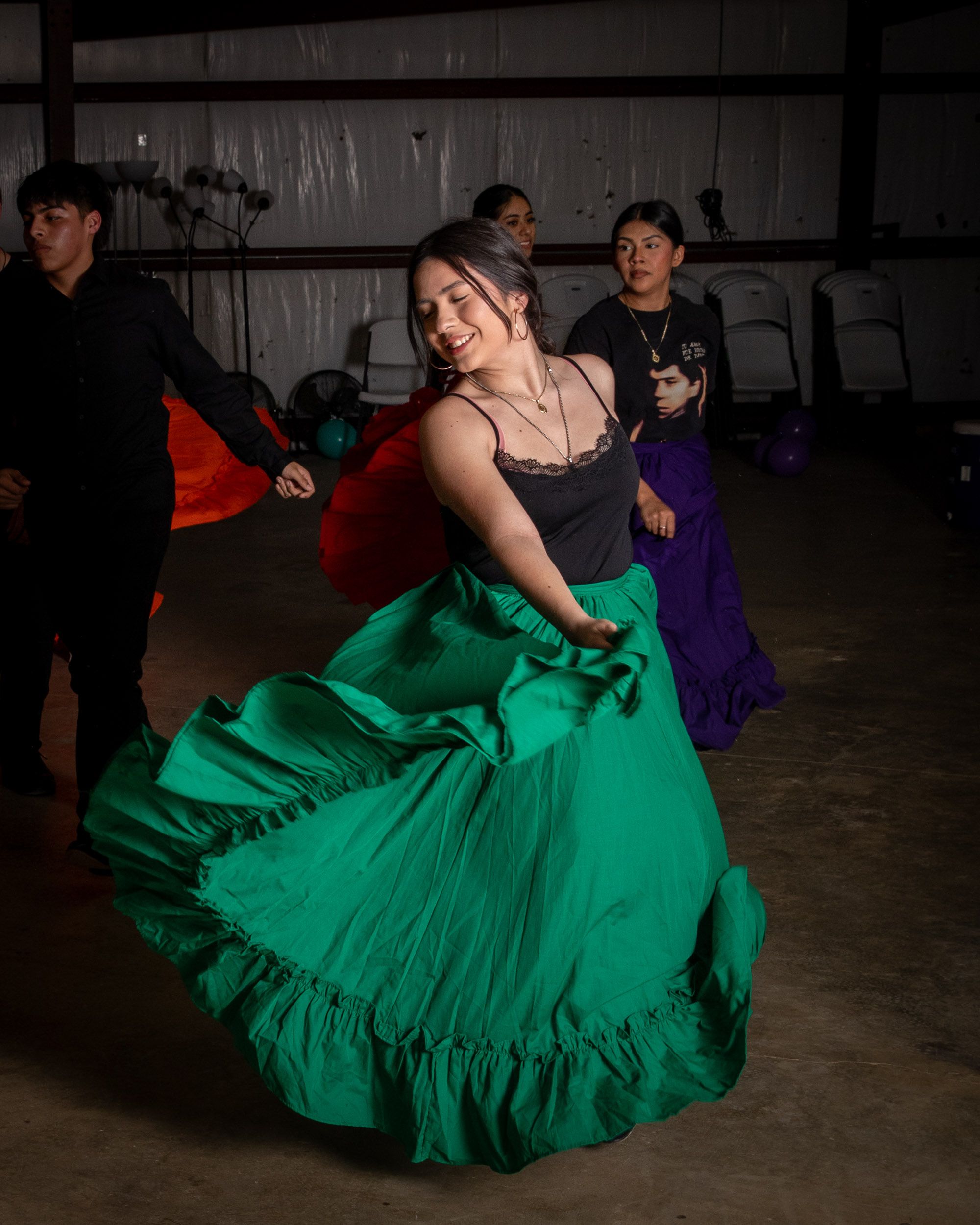
Raíces community members Lesley Hernández and her mom, Isidra Templos, love being a part of Raíces. Lesley loves learning new dances and making arts and crafts, and she’s glad she can speak Spanish during the program as she does at home. According to her mom, since Lesley joined Raíces, she’s transformed from being a shy girl who would “hide at home,” to being more open and independent as she gathers with the other children and learns new routines.
“In my family, Raíces has been something important to me because it has taught my daughter so much about our culture,” Isidra said. “I have more support from this community: they bring her home, and they help me a lot. For me,” Isidra continued, “this is important…because there are more families who have the same opinion, who agree with me that their children learn about our culture through this program.”
You can support Raíces Emma-Erwin and fight systems of cultural erasure and oppression by learning more about immigration in your community and by donating directly here.
Learn More:
Raíces: Resistencia a través de la cultura
El poder de las artes latinoamericanas para niñes y jóvenes
Raíces Emma-Erwin comenzó con un sueño de las madres de la comunidad Emma de Asheville, la cual cuenta con una gran población latina. No les cabía duda de que corrían el peligro de que se debilitaran los lazos familiares y de perder su identidad cultural a medida que sus hijes perdían el español. Procedentes de México y otros países de Centroamérica, en los últimos 20-25 años el oeste de Carolina del Norte se ha convertido cada vez más en el hogar de personas que buscan oportunidades laborales y educativas, la seguridad y la esperanza de crear un futuro mejor para sus hijes. Cuando esos niñes van a la escuela pública en el condado de Buncombe, aprender inglés -la lengua dominante de sus compañeres y profesores, predominantemente blancos- es inevitable. ¿Pero a qué precio? Si se pierde la lengua materna, también se pierden las claves de la identidad cultural y el sentido de pertenencia.
Anteriormente conocida como Nuestro Centro, la organización abrió sus puertas en 2007 para atender las necesidades de la creciente comunidad latina de Asheville. Ana Mayra Hernadez Aguilar, co-directora de Raíces, cuenta que Nuestro Centro evolucionó a medida que cambiaban los retos a los que se enfrentaba la comunidad a principios y mediados de la década de 2000.
"En 2013 se creó Raíces cuando las madres quisieron tener presencia en las escuelas y poder participar en el sistema escolar", dijo Aguilar. "Antes, exigían un pasaporte o una licencia para que los padres y madres pudieran participar en las actividades escolares. Así que decidimos participar en el cambio de política para que pudiéramos encontrar una manera de estar en las escuelas, y comenzar un grupo de arte, cultura y danza en la Escuela Primaria de Emma."
En la actualidad, Raíces, se ha ampliado para ofrecer programas a niñes y jóvenes que incluyen actividades extraescolares divertidas, culturalmente relevantes y basadas en las artes, así como un campamento de verano. El grupo de danza folclórica mexicana, Ballet Folclórico Raíces -con jóvenes entre los 14 y los 20 años- se reúne por las tardes para ensayar danzas que tienen cada una su propia historia y vestuario.
Cualquier madre y padre conoce la angustia de ver a un hije sentirse aislado, y esa sensación de desamparo se magnifica si además hay que enfrentarse a la barrera del idioma. En Raíces, toda la programación es en español y, a lo largo de los años, las madres han visto cómo les niñes crecían y florecían. Niñes que se habían quedado callados empezaron poco a poco a hablar con sus padres de nuevo y a conectar con sus familias. Recuperaron la confianza y seguridad en sí mismos al sentir la alegría de pertenecer a un espacio, moviendo sus cuerpos para bailar, mientras lucían hermosos vestidos y trajes tradicionales. Les niñes que empezaron con Raíces en 2013 ahora son les jóvenes adultes que regresan para enseñar a una nueva generación de niñes más jóvenes, y el ciclo de orgullo cultural y sanación generacional continúa.
"Raíces nació de la resistencia a la opresión, incluida la opresión policial y de las fuerzas del orden que estaba ocurriendo en nuestro barrio alrededor de 2012-13, cuando había muchos puntos de control de licencias policiales en nuestro barrio... los agentes de policía paraban a los padres a la entrada de sus barrios y parques de casas móviles mientras les niñes miraban desde los autobuses escolares. Queríamos crear conciencia", dijo Geny Hernández, Directora de Desarrollo Organizacional y Educación Popular de Colaborativa La Milpa (un colectivo 501-c3 de organizaciones de base, entre ellas Raíces).
Según el Center for American Progress, la población inmigrante de Carolina del Norte desempeñó un papel positivo neto en la economía del estado. Dejando a un lado las finanzas, el impacto cultural por sí solo también podría verse a través de una lente de gratitud y aprecio: si alguna vez has probado la tentadora comida de El Que Pasa en la avenida Patton, o te has topado con el concepto de "educación popular" y la creación de conocimiento colectivo, sabes que el impacto cultural de América Latina es un activo inestimable para la vida estadounidense. Aunque la Estatua de la Libertad en Liberty Island se erige como una bienvenida simbólica a los inmigrantes, Estados Unidos tantea drásticamente en su compromiso con esta bienvenida. Los puestos de control y otras actividades amenazadoras del Servicio de Inmigración y Control de Aduanas (ICE) se convertirían en algo habitual en Carolina del Norte después de que el Congreso aprobara la Ley de Seguridad Nacional en 2002.
Al resistirse a la supresión y a los sentimientos antiinmigración, Raíces elige la alegría y la celebración cultural como principio estratégico y fundamental para lograr el cambio. El Ballet Folklórico Raíces actúa una media de 8 veces al año, y reunirse es una oportunidad para que los miembros de la comunidad establezcan relaciones, creen cohesión y experimenten el orgullo de sus identidades culturales. Raíces también es miembro de la Colaborativa La Milpa, un colectivo de organizaciones dirigidas por latines e inmigrantes que trabajan para cambiar las disparidades raciales, económicas y educativas de la comunidad.
Los programas de Raíces están dirigidos principalmente por unos pocos empleados latines e inmigrantes comprometidos y reforzados por la energía de padres voluntarios, muchos de los cuales ya tienen al menos un trabajo y, a menudo, dos. Con la participación de unos 75 niñes y 50 familias, Raíces trabaja en toda la comunidad de Emma, con niñes y jóvenes que viajan desde todo el distrito escolar del condado de Buncombe para unirse a los grupos extraescolares y al campamento de verano, que se ofrece gratuitamente para mitigar la carga financiera que supone el cuidado infantil de calidad.
Ofrecer estipendios a los padres voluntarios y a les animadores juveniles, contratar a monitores de baile cualificados, proporcionar aperitivos y comida, recaudar materiales de manualidades, todo ello requiere una financiación que Raíces se esfuerza por recaudar cada año, ya que la demanda de sus programas sigue creciendo. Las subvenciones son útiles, pero sólo llegan hasta cierto punto cuando la necesidad es tan grande. Nadie quiere rechazar a les niñes y las familias que solicitan participar en los programas de Raíces, pero a veces hay que hacerlo para garantizar un alto nivel de atención. Con acceso a más financiación y recursos, Raíces podría ofrecer espacio para que 15 o más niñes siguieran aprendiendo conocimientos lingüísticos y tradiciones culturales vitales, sintieran el orgullo de la comunidad y se sintieran envueltos en un fuerte sentimiento de quiénes son y de dónde vienen.
A Lesley Hernández y a su madre, Isidra Templos, miembras de la comunidad de Raíces, les encanta formar parte de Raíces. A Lesley le encanta aprender nuevos bailes y hacer manualidades, y está contenta de poder hablar español durante el programa como lo hace en casa. Según su madre, desde que Lesley se unió a Raíces, ha pasado de ser una niña tímida que "se escondía en casa", a ser más abierta e independiente cuando se reúne con les otres niñes y aprende nuevas rutinas.
"En mi familia, Raíces ha sido algo importante para mí porque ha enseñado mucho a mi hija sobre nuestra cultura", dice Isidra. "Siento mucho apoyo de esta comunidad: la traen a casa y me ayudan mucho. Para mí", continuó Isidra, "esto es importante... porque hay más familias que tienen la misma opinión, que están de acuerdo conmigo en que sus hijes aprendan sobre nuestra cultura a través de este programa."
Puedes apoyar a Raíces Emma-Erwin y luchar contra los sistemas de opresión cultural informándote sobre la inmigración en tu comunidad y haciendo una donación directa aquí.
